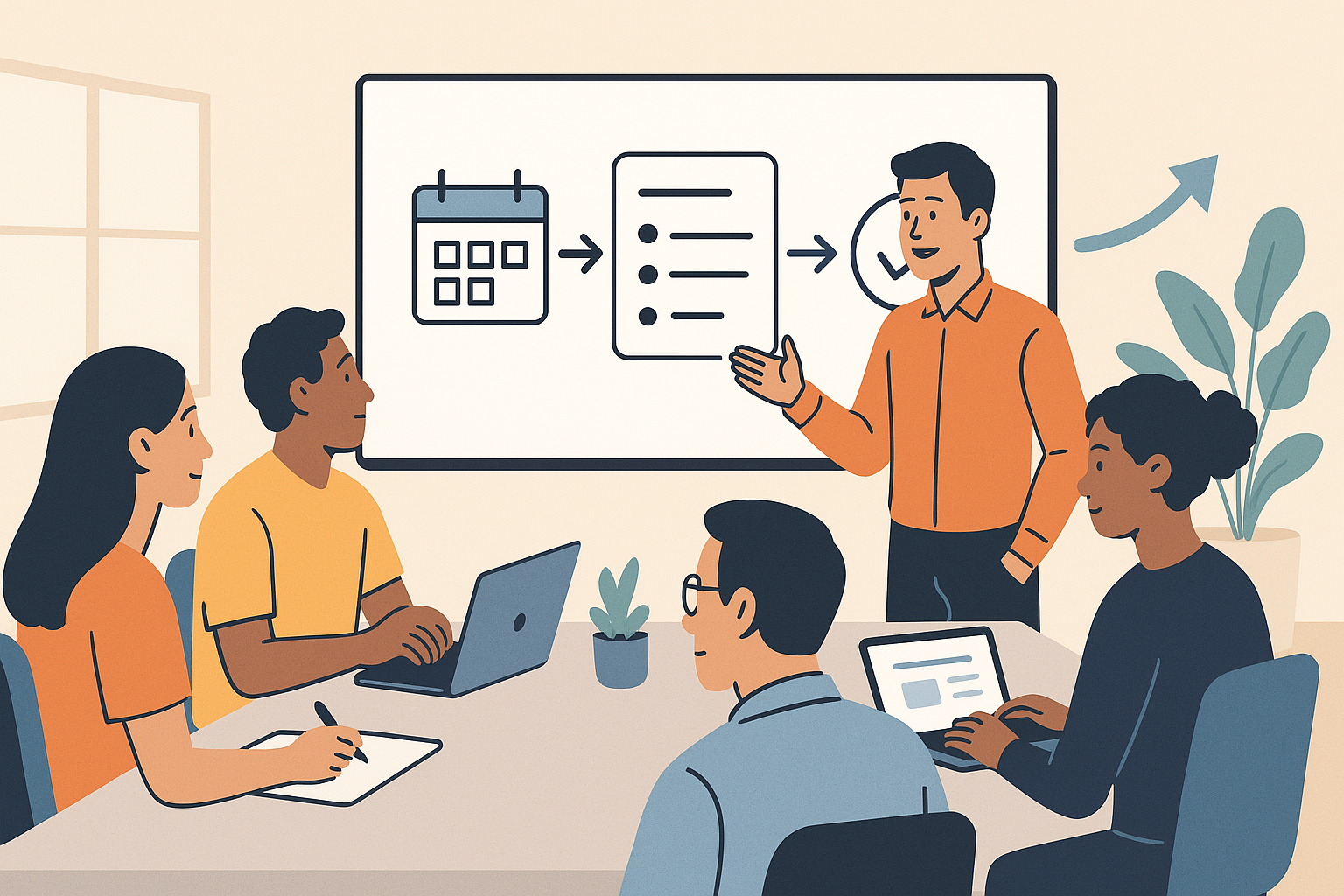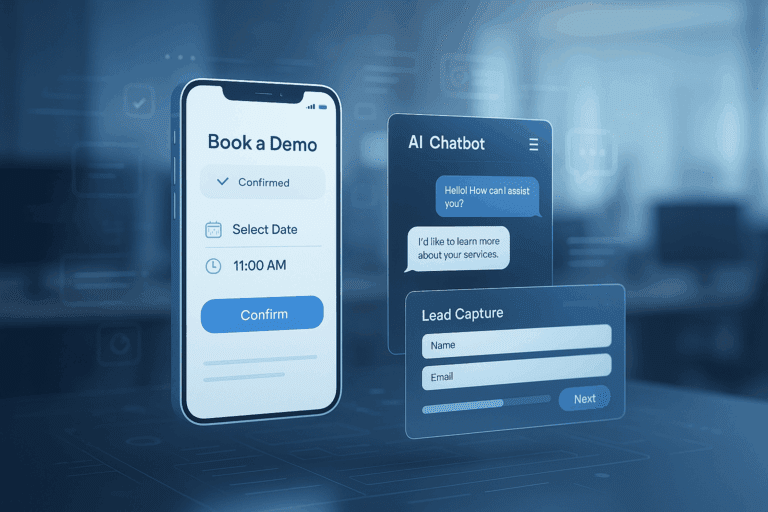How to Train Your Team on Click-to-Book & Lead Capture Flows in One Afternoon
Imagine turning confused team members into confident booking ninjas—all before your lunch break.
In the fast-paced world of digital business, time is money and leads are gold. Training your team to master click-to-book and lead capture flows doesn’t need to take days or require endless PowerPoint slides. In fact, with the right game plan, you can get everyone aligned, confident, and ready to roll in just one afternoon.
Think of it like teaching someone to drive a self-parking car. You’re not expecting them to build the engine, but you do need them to understand the controls, recognize warning signs, and trust the process. In this article, you’ll discover how to break down the essentials of booking and lead capture, deliver an engaging training session, and ensure your team walks away ready to convert more leads than ever.
Here’s how to make it happen—fast.
1. Start with the “Why”: Build Buy-In Before You Dive In
If your team doesn’t know why this matters, they’ll mentally check out before you hit slide two.
Start the session by connecting the dots between these tools and real revenue. Show how fast response times and easy booking experiences directly impact customer decisions. Use examples from your own business or industry horror stories where bad lead capture cost thousands.
Pro Tip: Begin with this eye-opener: 82 percent of buyers book with the first vendor to respond.
Quote to share: “People support what they help create.” — Dale Carnegie
When the team understands the impact, they’ll be far more motivated to learn the how.
2. Click-to-Book Decoded: Demystify the Process
Most people think the “Book Now” button is just a link. They have no idea what happens after it’s clicked.
That’s why you need to walk your team through the entire flow. Start with the user journey—landing page, call-to-action, calendar interface, confirmation email. Use a live demo or real booking example from your business to make it stick.
Highlight what a good experience looks like. Is it quick? Mobile-friendly? Personalized?
Pro Tip: Print out a simple flowchart: Click → Calendar → Confirm → Follow-Up
Stat to mention: Companies with streamlined booking processes see a 30 percent higher conversion rate, according to HubSpot.
Quote to share: “Make it easy for people to do business with you.” — Shep Hyken
Clarity is power. Once your team sees the big picture, they’ll better understand their role in keeping that process smooth.
3. Lead Capture That Converts: Not Just Another Form
Forms are like digital handshakes. If yours is awkward or overly demanding, people walk away.
Help your team understand what makes a lead capture form effective. It’s not just about asking for information. It’s about when, how, and what you ask. Show examples of high-performing forms that use clean design, clear copy, and minimal fields.
Also, cover what not to do: long forms, unclear calls-to-action, and unnecessary friction.
Pro Tip: Introduce the idea of progressive profiling. Don’t ask for everything at once—just enough to keep the conversation going.
Stat to use: Reducing form fields from 11 to 4 can increase conversions by 120 percent, according to Unbounce.
Quote to share: “Design is not just what it looks like. Design is how it works.” — Steve Jobs
Good lead capture is like a good conversation. Keep it easy, respectful, and focused on value.
4. Hands-On Practice: Role-Play Real Scenarios
Let’s face it. Watching slides doesn’t make someone good at their job—doing it does.
After walking through the theory, break your team into pairs or small groups. Give them real-world scenarios and let them walk through the booking or lead capture process. Whether it’s entering a lead, responding to a booking, or identifying a broken step, the goal is to make learning active.
Pro Tip: Use a demo environment or sandbox CRM so people can click around without breaking anything.
Stat to share: People retain 75 percent of what they practice, versus only 5 percent from lectures (National Training Laboratories).
Quote to share: “Tell me and I forget, teach me and I remember, involve me and I learn.” — Benjamin Franklin
This hands-on portion will take your training from forgettable to functional.
5. Automate the Follow-Up: Don’t Let Hot Leads Go Cold
Training your team is half the battle. Automation takes care of the rest.
Explain the value of instant follow-ups. Whether it’s a confirmation email, SMS reminder, or lead notification to the sales team, every second counts. The longer you wait, the colder the lead gets. Automation ensures consistency, speed, and professionalism.
Pro Tip: Have your team help set up one follow-up email or notification rule during the session.
Stat to highlight: 78 percent of customers buy from the company that responds first, according to Lead Connect.
Quote to share: “Automation is cost-cutting by tightening the corners and not cutting them.” — Haresh Sippy
Let your tools do the heavy lifting, so your team can focus on what humans do best—building relationships.
6. Quick Wins and KPIs: How to Measure Success
If you can’t measure it, you can’t improve it.
Wrap up the training by introducing the key performance indicators your team should watch. These might include booking rates, lead conversion percentage, time-to-respond, and drop-off rates. Set up a dashboard or regular reporting cadence so progress is visible and rewarding.
Pro Tip: Add a little competition. Show the team leaderboard weekly or celebrate monthly high-performers.
Stat to use: Businesses that track KPIs weekly grow twice as fast as those that don’t, according to Forbes.
Quote to share: “What gets measured gets managed.” — Peter Drucker
Metrics give meaning to your training. They turn effort into outcomes.
Final Thoughts: Train Fast, Lead Smart
You don’t need a weeklong boot camp or fancy consultant to get your team up to speed. With a bit of planning, a dose of energy, and a focus on the essentials, you can deliver a powerful training session that sticks.
Teach your team the why, walk them through the how, and give them the space to practice. Then let automation and metrics guide the rest.
Because every click is a chance to connect. And every lead is a chance to grow.


